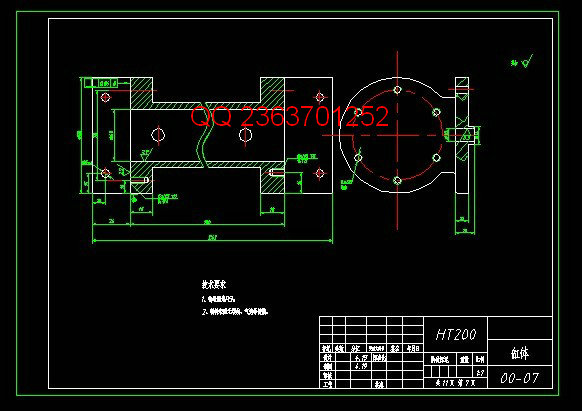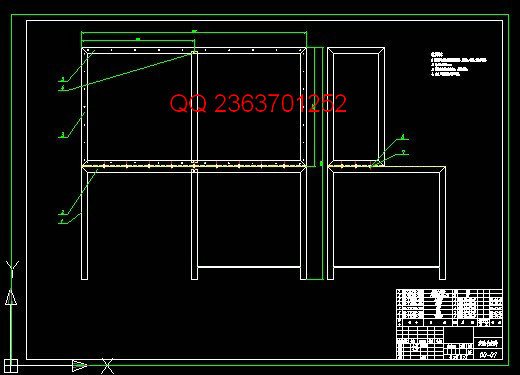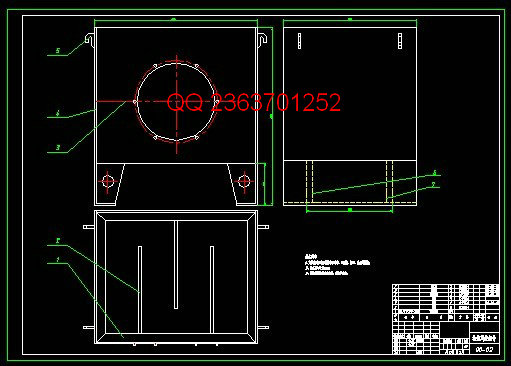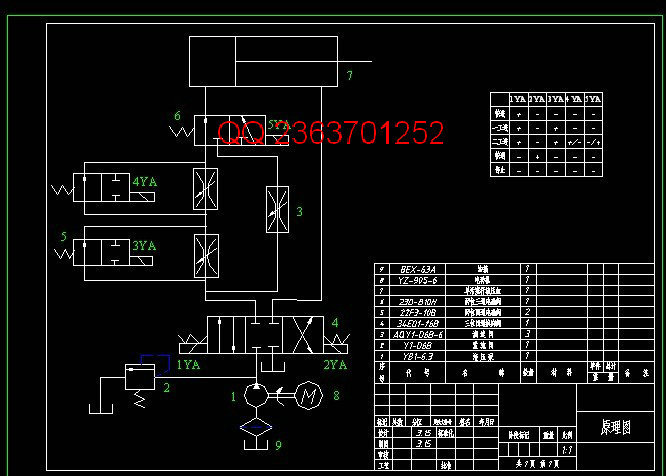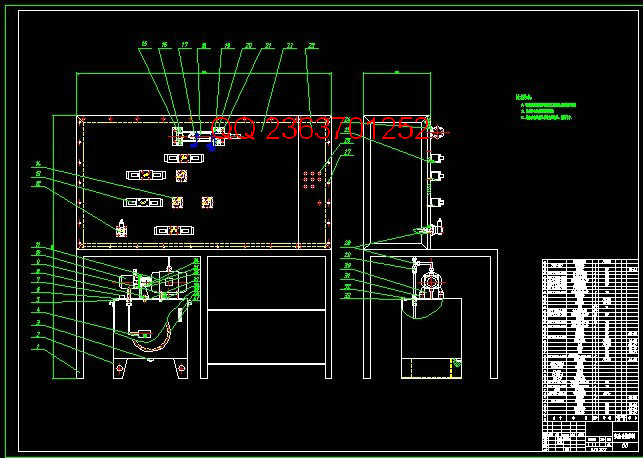|
设计简介 |
设计描述:
文档包括:
Word版设计说明书1份,共42页,约19000字
开题报告一份
外文翻译一份
CAD版本图纸,共23张
用调速阀的速度换接回路实验装置设计
摘 要
速度换接回路的功用是使液压执行机构在一个工作循环中从一种运动速度换到另一种运行速度,因而这个转换不仅包括快速转慢速的换接,而且还包括两个慢速之间的换接。实现这些功能的回路应该具有较高的速度换接平稳性。
本文阐述了采用调速阀的速度换接回路实验台的设计,主要对工作原理、结构组成、参数计算等发面做了详细的分析与研究,得出一套较为合适的方法来设计实验台。主要通过查阅相关资料,应用相关公式,从而对油箱进行设计,然后来选择液压站的动力装置,确定电机与泵的安装方式,最后再根据原理图以及各项参数来进行管路与管接头的选择,从而完成整个设计。
论文首先综述了国内外液压技术的研究进展及研究现状、分析课题的研究背景、阐述课题研究的意义和内容。然后重点从原理设计、各回路的功能分析与选择入手,从而选择液压元件,计算其性能是否符合指标,最后校核温升。
关键词:液压基本回路;速度换接回路;实验装置
The Design of Switching Circuit Experiment Device
Adopting the Speed Regulator Valve
Abstract
Speed exchange circuits are used to make the hydraulic actuator to change from one motion to another running speed in a work cycle, so the conversion includes not only the fast switching for slow, but also includes the exchange between the two slow. Loop should achieve these functions with high speed and stability
This paper describes the design of circuit experiment platform for the speed regulator valve, mainly on the working principle, structure, parameter calculation etc to do a detailed analysis and research, to design the experiment which obtains a set of suitable method. Through access to relevant information, related formulas are used, thus the choice of tank, power plant and then to select the hydraulic station, the installation mode of motor and pump, finally to pipeline according to the schematic and the various parameters and selection of pipe joints, so as to complete the whole design.
The paper first summarizes the analysis of the status quo, and research progress of study on the hydraulic technology at home and abroad and the significance of research background, describes the research topics. Then focus from the principle of design, function analysis and selection of circuits, and choosing hydraulic components, its performance is in line with the index calculation, finally the check temperature rise.
Key Words: Hydraulic basic circuit;Speed changeover circuit;Experimental installation
主要符号表
qp 液压泵得最大流量
pp 液压泵最大工作压力
p1 执行元件最大工作压力
Δpλ 沿程压力损失
KL 系统的泄漏系数
? 运动粘度
CT 油箱散热系数
目 录
1绪论 1
1.1前言 1
1.2题目背景及研究意义 2
1.3课题主要内容 3
2液压传动综述 4
2.1液压传动系统的组成 3
2.2液压传动的优缺点 4
2.3液压技术的应用和发展状况 5
2.4液压系统设计要求及流程 6
3速度换接回路液压系统的设计 7
3.1液压系统的工况分析 7
3.2原理图的拟定 7
3.2.1确定液压泵类型 7
3.2.2原理图设计 7
3.3液压系统参数的计算及液压元件的选择 11
3.3.1液压缸主要尺寸的确定 11
3.3.2选择液压泵规格 13
3.3.3液压元件的选择 14
3.3.4确定管路尺寸 15
4液压油路板的结构与设计 16
4.1液压油路板的结构 16
4.2液压油路板的设计 16
4.2.1分析液压系统,确定液压油路板结构 16
4.2.2液压元件的布局及油孔的位置 16
4.2.3绘制液压油路板零件图 17
5液压站的设计 18
5.1液压油箱的设计 18
5.1.1液压油箱有效容积的确定 18
5.1.2液压油箱的外形尺寸 19
5.1.3液压油箱的结构设计 19
5.2液压站的结构设计 22
5.2.1液压泵的安装方式 22
5.2.2电动机与液压泵的联接方式 23
5.2.3液压站的结构设计的注意事项 23
6液压辅件的选择 25
6.1管路的选择 25
6.2管路的连接 25
6.3液压油的选择 26
7液压系统的验算 28
7.1压力损失的验算 28
7.1.1工作进给时进油路压力损失 19
7.1.2工作进给时回油路压力损失 19
7.1.3变量泵出口处的压力pp 19
7.2系统温升的验算 29
8液压站的组装调试、使用维护 31
8.1液压站的组装 31
8.1.1液压元件和管道安装 31
8.2液压站的使用与检查 32
8.2.1使用注意事项 32
8.2.2操作方法 32
8.2.3检查 32
9结论 33
参考文献 34
致谢 35
毕业设计(论文)知识产权声明 36
毕业设计(论文)独创性声明 37
|





